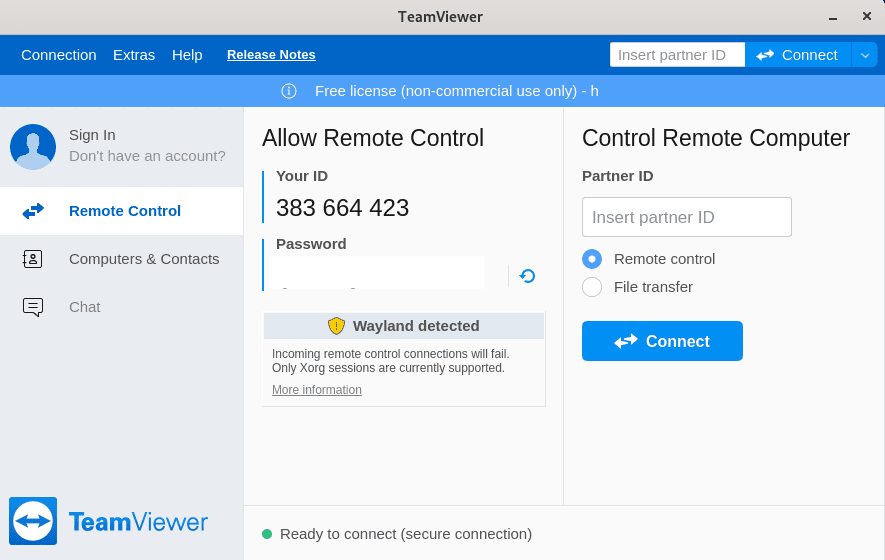
In this tutorial, we will show you how to install and configuration of TeamViewer on your CentOS 7 server. For those of you who didn’t know, TeamViewer is a proprietary computer software package for remote control, desktop sharing, online meetings, web conferencing, and file transfer between computers. Versions are available for Microsoft Windows, OS X, Desktop Linux, iOS, Android and Linux, Windows RT, and Windows Phone operating systems. It is also possible to access a machine running TeamViewer with a web browser. While the main focus of the application is the remote control of computers, collaboration and presentation features are included.
This article assumes you have at least basic knowledge of Linux, know how to use the shell, and most importantly, you host your site on your own VPS. The installation is quite simple and assumes you are running in the root account, if not you may need to add ‘sudo‘ to the commands to get root privileges. I will show you the step-by-step installation of TeamViewer on a CentOS 7 server.
Prerequisites
- A server running one of the following operating systems: CentOS 7.
- It’s recommended that you use a fresh OS install to prevent any potential issues.
- SSH access to the server (or just open Terminal if you’re on a desktop).
- A
non-root sudo useror access to theroot user. We recommend acting as anon-root sudo user, however, as you can harm your system if you’re not careful when acting as the root.
TeamViewer features
- Remote QuickSteps. Save yourself hundreds of clicks with one-click shortcuts for your most-used remote support actions. (Premium and above)
- Remote control tabs for Mac OS. Conveniently run multiple remote sessions on macOS in tabs with Sierra’s latest tab-view technology.
- Service case notifications. Take swift action on the pop-up and email notifications. Delegate tasks faster, for more effective IT support. (Business and above)
- Remote Sticky Note. Leave a message behind for a more personal customer relationship.
- Provides screen sharing with frame rates up to 60 fps (frames per second). No stuttering, no lag.
- Intelligent connection setup. Connect with the best possible quality via automatic intelligent system adjustments, based on your network conditions and system hardware.
- Faster file transfer.
- And more.
Install TeamViewer on CentOS 7
Step 1. First, let’s start by ensuring your system is up-to-date.
yum clean all yum install epel-release yum -y update
Step 2. Installing TeamViewer on CentOS .
Use the following commands to install the TeamViewer on CentOS 7:
wget https://download.teamviewer.com/download/teamviewer.i686.rpm yum localinstall teamviewer.i686.rpm
Type the below command from the command prompt to start Teamviewer:
teamviewer
With a first-time startup, TeamViewer will prompt you to accept the agreement. After clicking on accepting agreement TeamViewer will start.

Congratulations! You have successfully installed TeamViewer. Thanks for using this tutorial for installing TeamViewer on CentOS 7 system. For additional help or useful information, we recommend you check the official TeamViewer website.